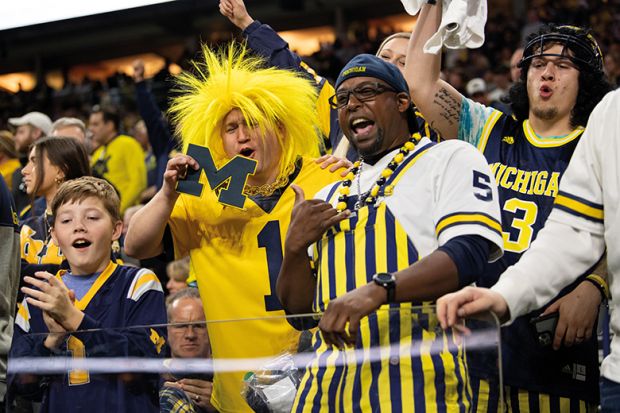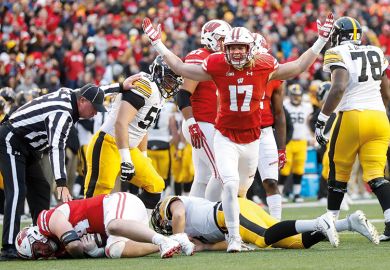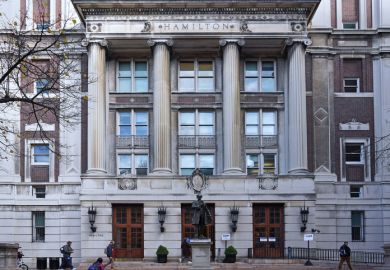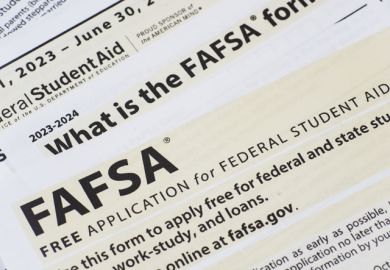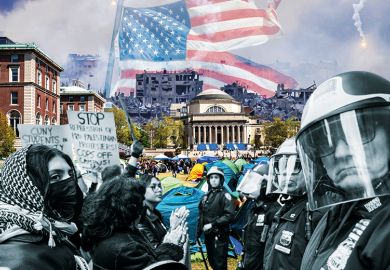When Thilo Kunkel looks out at the students in a class he teaches at the Temple University School of Sport, Tourism and Hospitality Management, some of the faces that stare back at him are unusually intent on what he’s saying.
For them, the course – Athlete Branding: Name, Image and Likeness – is far from theoretical. The students are university athletes learning how to leverage their new power to cash in on their celebrity for a piece of hundreds of millions of dollars suddenly available to them.
Two years after restrictions fell on US university athletes receiving almost any kind of compensation, the epic change in those rules means that promising student athletes as young as 18 are making endorsement deals worth millions before even setting foot on campus.
And while not everyone is benefiting at that level – on average, student athletes in the top division made $6,785 (£5,440) each last year from endorsements and appearances, according to Opendorse, one of the many companies that have sprung up to help them maximise their “brands” – student athletes collectively made more than $900 million in the first year of this change. That sum is expected to come in even higher when the second year is tallied.
“What we see over the last two years is really a complete land shift in college athletics,” said Dr Kunkel, who is also director of Temple’s Sport Industry Research Center.
Before then, universities and the governing National Collegiate Athletic Association (NCAA) made money from selling student athletes’ images to anyone, from video game makers to T-shirt manufacturers. But the students themselves were barred from this lucrative commerce.
Years of lawsuits resulted in a US Supreme Court decision that let student athletes profit, for the first time, from their names, images and likenesses – abbreviated to NIL. Combined with a simultaneous parade of state laws, the ruling forced the NCAA and universities to relent and lift their restrictions on student athletes being paid, effective from 1 July 2021.
The results, say experts, have been good and bad for students, whom the NCAA had long contended were sufficiently compensated for their labour with the educations they received. University athletics has brought in $19 billion a year from broadcast rights, sponsorships and ticket sales, royalties, licensing, student fees and contributions, according to the NCAA.
“It’s absolutely more honest” to finally pay student athletes for their fundamental role in this industry, said Erianne Weight, a professor of sport administration and director of the Center for Research in Intercollegiate Athletics at the University of North Carolina at Chapel Hill and a former university heptathlete.
Dr Kunkel sees the new NIL landscape as letting formerly cash-strapped student athletes make enough to stay at university, and stay longer. “Now they don’t need to flip burgers in their free time” to make ends meet, he said, or feel pressured to drop out and go pro.
On the other hand, on top of playing in their sports and being full-time students, Dr Weight said, “now we’re asking them to manage this job of being entrepreneurs. It’s really exacerbated the problems that were already ailing US college sports.”
Meanwhile, university boosters and donors are taking advantage of the new NIL rules to lure top student athletes with cash in what critics say is a “pay-to-play” recruiting war.
The boosters have formed “collectives” independent of the universities, which pool their money and offer it to top athletic prospects. One American football coach, Nick Saban at the University of Alabama, has accused competing teams of “buying” top recruits. A record number of student athletes are now transferring among universities, purportedly in search of the best deals for themselves.
“These collectives are there to bring athletes to the university,” Dr Kunkel said. “In the past it was a brown paper bag under the table. Now they’re doing it legally.”
Professional agents are also stepping in to take a cut. So are companies that connect athletes with sponsors. Some universities are still demanding their share, too, requiring that if student athletes are shown wearing university logos in endorsements, they have to hand over part of their earnings. Universities also have their own lucrative sponsorship and marketing deals with major brands, and several ban their athletes from endorsing those brands’ competitors.
Now California legislators are considering a law that would require universities to also pay some revenue earned from athletics to student athletes, yet another “land shift” that could spread nationwide and result in athletes sharing additional tens of millions of dollars.
Dr Kunkel, who moved to the United States from Germany, sees all of this as a sort of acknowledgment of an American way of doing things, from which student athletes were long excluded.
“This country”, he said, “is built on people being entrepreneurial and making a name for themselves.”
Register to continue
Why register?
- Registration is free and only takes a moment
- Once registered, you can read 3 articles a month
- Sign up for our newsletter
Subscribe
Or subscribe for unlimited access to:
- Unlimited access to news, views, insights & reviews
- Digital editions
- Digital access to THE’s university and college rankings analysis
Already registered or a current subscriber? Login
